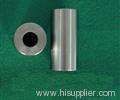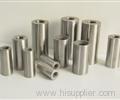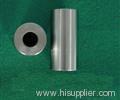|
K.G. (HK) Co., Ltd.
|
piston pin
| Place of Origin: | Zhejiang, China (Mainland) |
|
|
|
| Add to My Favorites | |
| HiSupplier Escrow |
Product Detail
piston pin
In internal combustion engines, the gudgeon pin (UK, wrist pin US) is that which connects the piston to the connecting rod and provides a bearing for the connecting rod to pivot upon as the piston moves.[1] In very early engine designs (including those driven by steam and also many very large stationary or marine engines), the gudgeon pin is located in a sliding crosshead that connects to the piston via a rod.
The gudgeon pin is typically a forged short hollow rod made of a steel alloy of high strength and hardness that may be physically separated from both the connecting rod and piston or crosshead.[1] The design of the gudgeon pin, especially in the case of small, high-revving automotive engines is challenging. The gudgeon pin has to operate under some of the highest temperatures experienced in the engine, with difficulties in lubrication due to its location, while remaining small and light so as to fit into the piston diameter and not unduly add to the reciprocating mass. The requirements for lightness and compactness demand a small diameter rod that is subject to heavy shear and bending loads, with some of the highest pressure loadings of any bearing in the whole engine. To overcome these problems, the materials used to make the gudgeon pin and the way it is manufactured are amongst the most highly-engineered of any mechanical component found in internal combustion engines




